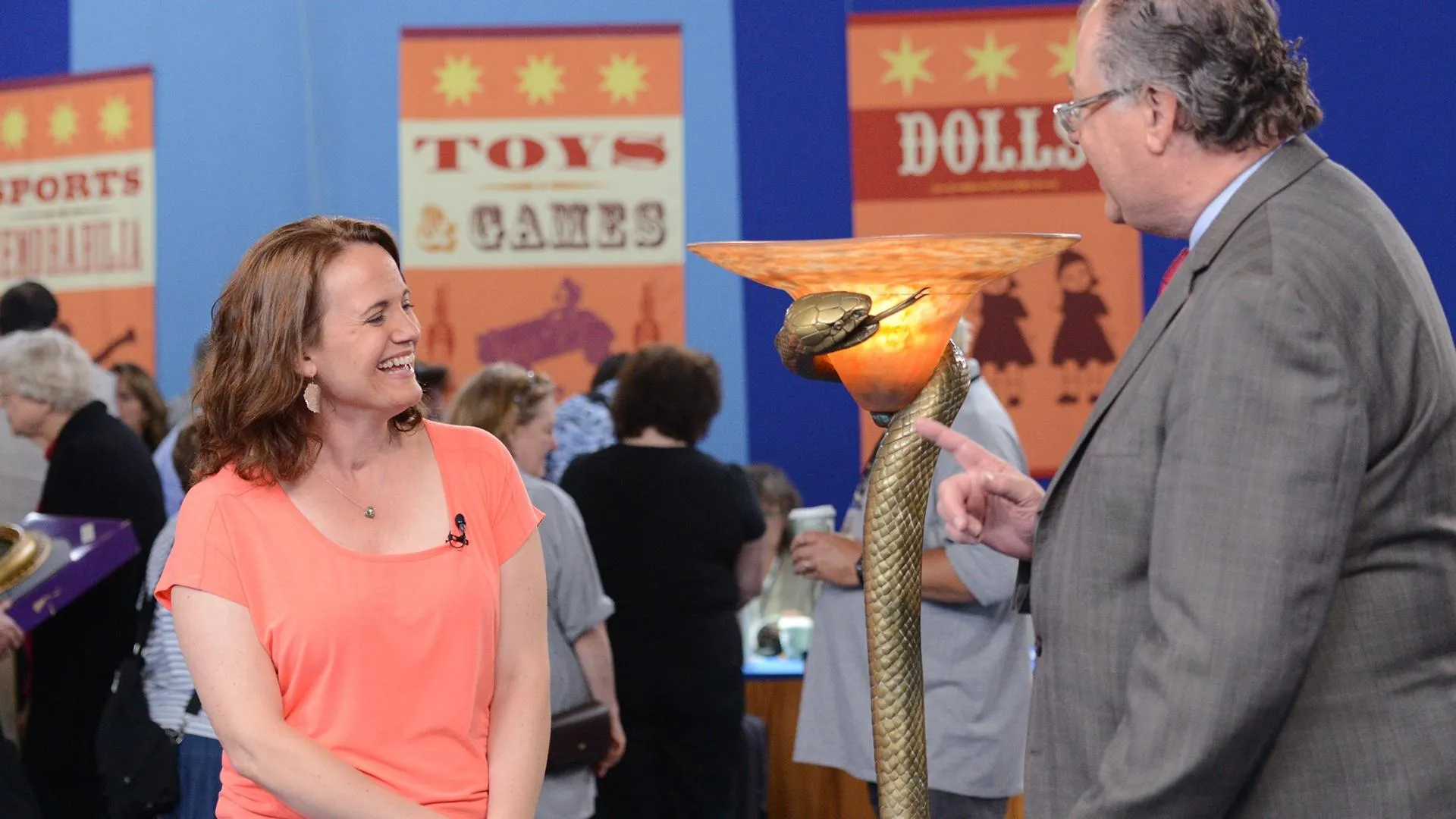GUEST: I brought in three plates that for a long time I assumed were all done by my grandmother, but when we got the tickets for the ROADSHOW and I started looking at them more carefully, I saw that the signatures are different. My grandmother's name was Shepard, so this one obviously she painted. But the other two, I don't know if it was a friend of hers or a relative of mine. I don't know anything at all about the other two plates.
APPRAISER: This type of ware is generally referred to as China painting. Now, in the late 19th century and into the early part of the 20th century, ladies of fashion would get together in China painting parties and paint these plates, or blanks. So all of these blanks have a mark on the back of them. We won't turn them around, but they all say, "Limoges." There were also German and Austrian makers that made the blanks. They would be imported to the States. Let me tell you a little bit about this other signature here. So it says "Franz A. Bischoff." Franz Arthur Bischoff. He was born in 1864 in Austria, which I think is now part of the Czech Republic where he was born, and then died in 1929. So he's kind of a success story as an immigrant. He ended up in Dearborn, Michigan, where he opened a China painting school, so he would help ladies get better at painting their China painting. And eventually, he became known as the king of the roses painting. And you can see in this big charger here, the roses, every time you look at them, they just get more and more depth and more and more beautiful. He also painted this one, a smaller one, and it says here, "1908" and "1908."
GUEST: Okay.
APPRAISER: Now, Bischoff went from Michigan and came out to California around 1900. In 1908, he built a house in Pasadena and used that as his studio. So your grandmother may very well have worked with Bischoff. At this point, Bischoff got into oils, and he had these huge oils with wonderful roses. He did these great California landscapes that sell for quite a bit of money. You don't see the china painting of his all that often. I would put an auction estimate on this platter, which is a nice big one, at $10,000 to $15,000. $10,000 to $15,000. And this one, which is a little smaller, I'd put, like, at $3,000 to $5,000. Now, one of the oddities of china painting is most of the people were not professional painters.
GUEST: Right.
APPRAISER: So without it being Bischoff, your painting over there may be worth $100 to $150, that's all.
GUEST: Yeah.
APPRAISER: But you have this wonderful thing from your family.
GUEST: Right.
APPRAISER: So you won't put them in the dishwasher at this point.
GUEST: No, I won't put them back in the kitchen sink and wash them again. I won't hang it with a coat hanger.
APPRAISER: This is paint on pottery, so anything that you would not do to a painting you would not do to these.
GUEST: Oh! Oh, the poor things have been abused for many years. I'll take better care of them.







